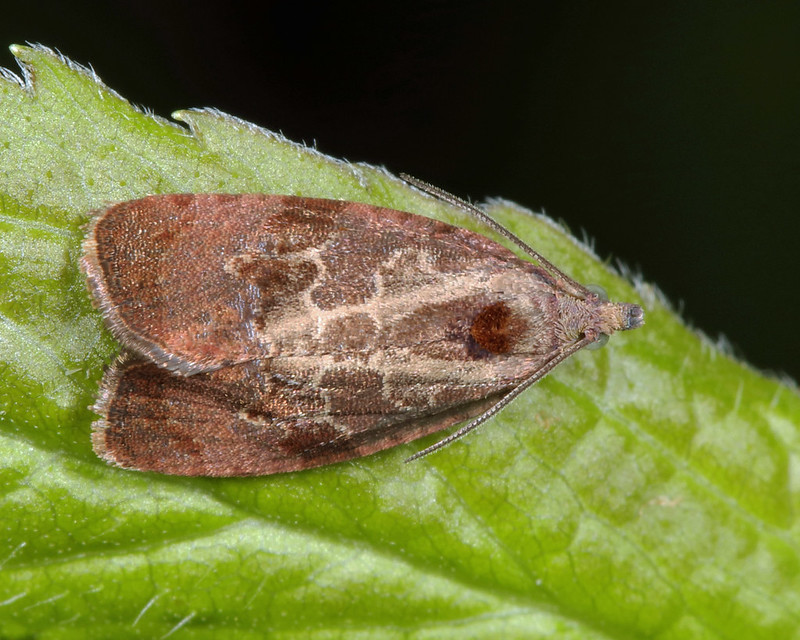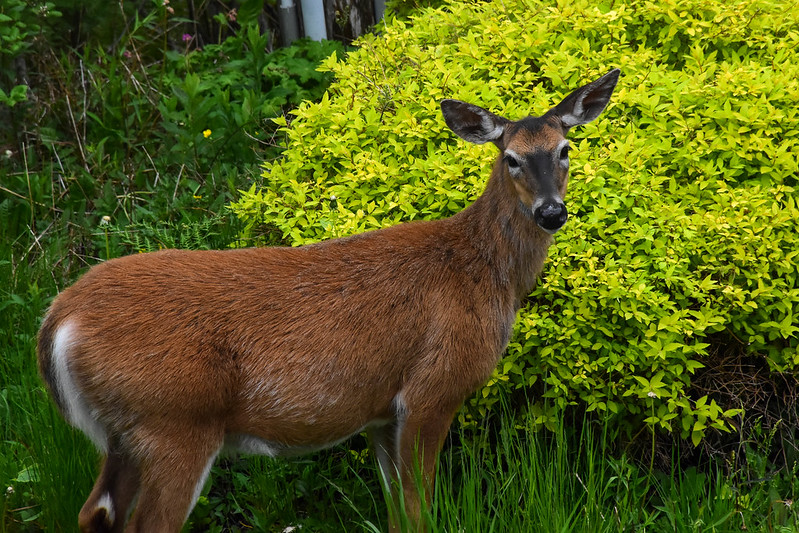Planting spirea shrubs in the correct location in your garden will go a long way to keeping them free from pests and diseases. Spirea requires at least 6 hours of direct sun exposure to bloom well and grow sturdy and healthy. Spireas that are grown in too shady of a location or that do not have good soil drainage will struggle to thrive and will become susceptible to predatory pests. Sap-sucking insects such as aphids, leafrollers, and scale are the most common pests found in the home garden. Catching these pests early will ensure the complete recovery of your plant.
Common Spirea Pests
Aphids
Aphids are sap-suckers that feed on soft tissues of new growth, reducing the plant's effectiveness for photosynthesizing. Over time, parts of the shrub may become distorted and even fall off prematurely. The adults and eggs can overwinter on woody plant stems and at the base of leaf buds, and can reinfect shrubs the following season. The specific aphids that attack spireas are scientifically known as Aphis spiraecola. These aphids are more likely to strike plants grown in the wrong climatic conditions.
Aphids produce a sticky, sweet honeydew as they feed. This honeydew can cause secondary infestations of ants and can drip on walkways, cars, or patio furniture. Sooty mold is black and grows readily on the honeydew, causing more damage to outside furnishings when left untreated.

Photo by Brandon Seyboth
Treating Aphids on Spirea
Aphids can be sprayed off branches and leaves with a sharp blast from the hose. Make sure to spray both the top and underside of the leaves. This treatment may need to be repeated over the course of a few weeks. Insecticidal soap sprays are also effective against aphids. Look for a brand that is safe to use on spirea and follow the manufacturer's instructions.
Aphid levels can be kept in check by predatory insects, including lady beetles, syrphid flies, parasitic wasps, and lacewings. You can plant a variety of native perennials and shrubs to attract these beneficial predators. The aphids may appear in large numbers until the predator populations ramp up.
Fortunately, mature shrubs and trees are rarely permanently damaged by aphid infestations. Cut out badly affected stems and leaves to maintain the overall health of the plant after the aphids have been treated.
Preventing Aphids on Spirea
Planting spirea in a location with partial to full sun exposure is key to protecting them from aphids. Aphids prefer feeding on weak plants growing in poor conditions or those over-fertilized with high nitrogen feeds. Overfertilization encourages growth of succulent, dense foliage that attracts aphids.
Avoid using full-spectrum insecticides, which kill not only the pests but any beneficial insects in the area. Decreasing the use of these pesticides helps to support a natural balance of predator and prey, allowing your garden's particular ecosystem to stay balanced and healthy with fewer incidences of pests.
Leafroller
Leafrollers are the larvae of certain moths that form webbed tents to protect themselves from predators. The moths lay eggs in leaves early in the summer, and the larvae and pupae feed on the leaves and wrap themselves up for protection until they spin webs later in the summer. The webbing is visible at the ends of spirea branches and looks like small tents where the pupae will emerge as the adult moth.
Infestation levels vary from year to year from minimal to heavy. The caterpillars feed on the new season's growth and rarely take up residence deeper inside the shrub. Their presence is more of a nuisance than a threat and does not often have long-term effects.

Photo by Tom Murray
Treating Leafroller on Spirea
Pruning out the affected branches on spirea is the best way to control leafroller damage. Prune away branches that show signs of leaf rolling early in the season to prevent webs appearing later. There are no chemicals approved for home use on the larvae. Spirea is a resilient shrub and will replace damaged growth quickly. Make clean cuts when you prune out damaged branches to prevent secondary infections of canker bacteria.
Preventing Leafroller on Spirea
The adult moths can go great distances between plants. Attracting the leafroller's natural predators into your garden will go a long way to keeping populations at low levels. Tachinid flies, lacewing larvae, assassin bugs, many beetles, and even some birds feed on not only the caterpillars but the eggs as well. Provide nesting areas and shelter for beneficial insects by leaving log piles, letting areas of the lawn grow long, installing a pond (of ANY size), planting native plants for pollinators, and using organic materials for mulching garden beds.
Scale
Spirea scale insects (Eriococcus borealis) are another sap-sucking insect that prefers to feed on spirea. The insects are white and resemble waxy mealybugs. The scales multiply rapidly and can cover large portions of stems when left unchecked. The feeding distorts leaves and flower buds, stunts growth, and eventually impairs the health of the shrub. The insects produce a sticky honeydew, which drips from the plants and attracts ants and sooty mold spores.
Treating Scale on Spirea
For repeated outbreaks on spirea, you can spray shrubs with organic horticultural oil late in the winter. Look for products that are certified for organic use and have the OMRI seal on the label. Spraying the shrub before bud break in the spring eliminates any overwintered eggs or adults from the previous growing season. Light infestations are often effectively treated using a sharp stream of water from the hose a few times to knock any visible insects off the shrub. Insecticidal soaps are also effective. Be sure to use any spray only during the early morning or late evening when beneficial pollinators are less likely to be affected.
Preventing Scale on Spirea
Maintain a balanced garden ecosystem by encouraging both predatory and beneficial insects to take up residence. Limit the use of full-spectrum insecticides, which kill all insects, beneficial or pests. Monitor the health of plants in your garden regularly so that any developing issues can be handled quickly. Consider taking out plants that do not recover fully or are susceptible to repeat attacks. Keep spirea healthy by planting it in full or partial sun with well-draining soil.
Mammal Browsing
Spirea is tolerant of browsing from both rabbits and deer. This means that if any of its stems or leaves are damaged, they are likely to grow back quickly and usually more densely. Rabbits typically make clean cuts close to the ground. Deer leave ragged edges behind on nibbled leaves and flowers. They usually browse at mid-height, as they tend to avoid looking for food below or above their eye height. Both animals prefer tender new flower buds and leaves on the youngest plants. Often as spirea matures, the leaves get more leathery and unpalatable for browsing.

Photo by Paul, unmodified, Flickr, Copyright CC BY 2.0 DEED
Treating Deer and Rabbit Damage on Spirea
If deer or rabbits damage your spirea, perform light pruning with sharp pruners. Remove any ragged stems and branches, and even out the shape of the shrub. Make cuts just above a set of leaves to prevent the appearance of naked stems.
Preventing Deer and Rabbit Damage on Spirea
The best protection from deer and rabbits in the garden is to erect a fence at least 8 feet tall with a 2-foot underground barrier to keep bunnies from burrowing into the garden. This solution is often impossibly expensive and unattractive in a home garden. Instead, protecting individual plants may be more suitable. Ornamental shrubs and trees can be protected with temporary cages constructed from yard stakes and plastic deer fencing. Keep the fencing in place until either the tree grows tall enough or develops enough woody, mature growth. You can also use spray repellents on prized shrubs. These formulas usually only work for a short period and need to be reapplied after heavy rain.
Sources: "Spirea (Spirea)." Connecticut State - The Connecticut Agricultural Experiment Station. portal.ct.gov
 |
Author Robbin Small - Published 1-4-2024 |
